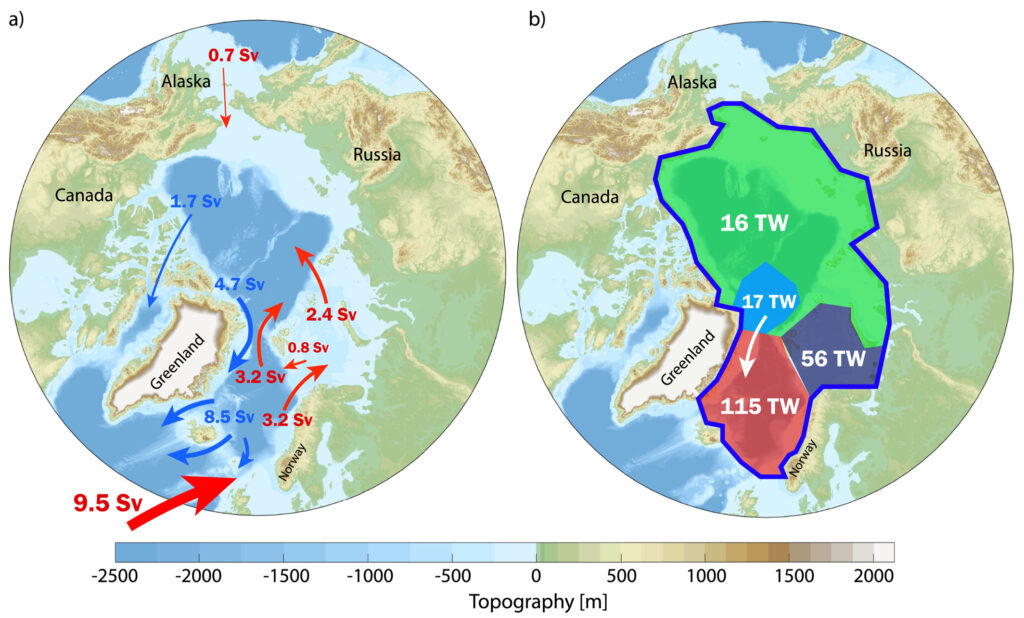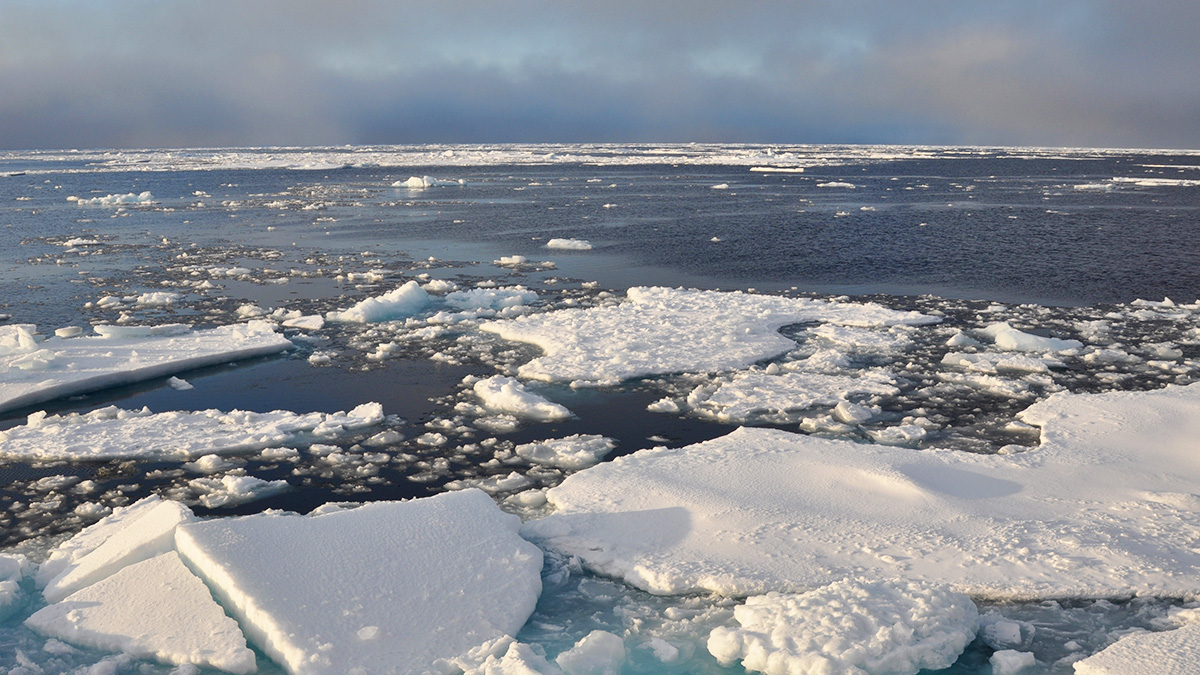Editors’ Vox is a blog from AGU’s Publications Department.
Warm ocean currents flows poleward and cold water flows equatorward on planet Earth. In the north Atlantic, warm water flows from the Caribbean to the Nordic and Arctic Seas. A recent article published in Reviews of Geophysics examines this flow of Atlantic Water and its knock-on effects, such as heat loss to the atmosphere, a decrease of Arctic sea ice, and the retreat of Greenland glaciers. We asked the lead author some questions about these processes and how they have changed over time.
Why does warm ocean water flow towards the poles and what happens when it gets there?
Warm ocean water flows towards the poles because it is pushed. The pushing is done by wind forcing and differences in sea surface height; in warmer regions water expands and sea level rises, while in colder regions water is compressed and sea level is lower. There is a gradual cooling of the water along the way.
In the case of the Atlantic Ocean up to the Arctic, the warm water starts in the Gulf of Mexico at above 30°C and eventually reaches the freezing point at -1.8°C around Svalbard. The ocean carries a lot of heat this way. This cycle contributes to keeping mainland Europe and Scandinavia much warmer than they would have been without these currents because when this water returns south it is much colder.
What are the characteristics of this heat flow in the Arctic Ocean?
Within the Arctic Ocean, the general flow is influenced by a large flux of freshwater added to the surface from river inflow, rain, and melting glaciers. This freshwater creates a fresh estuarine surface outflow that is influenced by the Coriolis force and therefore remains close to the Greenland and the Canadian side, while the warm inflow is always found on the east side of the Nordic Seas along the coast of Norway. Note that the Nordic Seas are an important part of the Arctic Ocean, and that the name “Arctic Mediterranean” has also been frequently used to describe this body of water.
How has heat transport affected Arctic sea-ice cover over the past century?
There is a close relationship between northward ocean heat transport and the heat gained by the atmosphere above the Arctic Ocean. When the sea ice cover decreases there is a larger area of open water available for cooling, leading to increases in total cooling We found a surprisingly large increase, from about 150 terawatts around the year 1900 to about 200 terawatts in the recent decades. We can’t really say that the sea ice loss has caused the increase in heat loss and heat transport, just that they are congruent.

What drives variability in ocean heat loss?
The year-to-year variability is dominated by Cold Air Outbreaks in the Nordic Seas. The long-term increase in heat loss is related to the increased ocean heat transport and the Arctic sea-ice loss. This sea-ice loss has occurred mostly in the Barents Sea. The increased ocean heat transport is again, at least partly, driven by increased wind forcing around the Shetland Island west of Norway.
How do Cold Air Outbreaks impact climate?
The Cold Air Outbreaks occur when cold air masses blow southwards from the sea ice covered part of the Polar Ocean and out over warm ocean waters in the Barents and Nordic Seas. They occur as the cold side of low pressure systems in the atmosphere, and produce really intense events of ocean heat loss approaching 1000 watts per square meter. Most of the shorter-term variability in heat loss from the Nordic Seas are explained by these events.
What are some of the unresolved questions where additional research, data, or modeling is needed?
What remains is to improve our confidence in future predictions. Our review found a somewhat surprising increase in ocean (volume) transport towards the Nordic Seas; an increase of about 1 sverdrup (1 million cubic meters per second) over the last 100 years. The Gulf Stream starts out at about 30 sverdrups east of New York, and the inflow to the Nordic Seas is about 10 sverdrups. This increase is at odds with the speculations that the overturning in the North Atlantic may be slowing down. Many people forget the horizontal part of the circulation with inflow in the east and outflow in the west. But apart from this, an increased future heat loss, driven by the expected Arctic sea ice loss, may actually drive an overall stronger future inflow towards the Arctic Ocean.
—Lars H. Smedsrud ([email protected], ![]() 0000-0001-7391-0740), University of Bergen, Norway
0000-0001-7391-0740), University of Bergen, Norway

